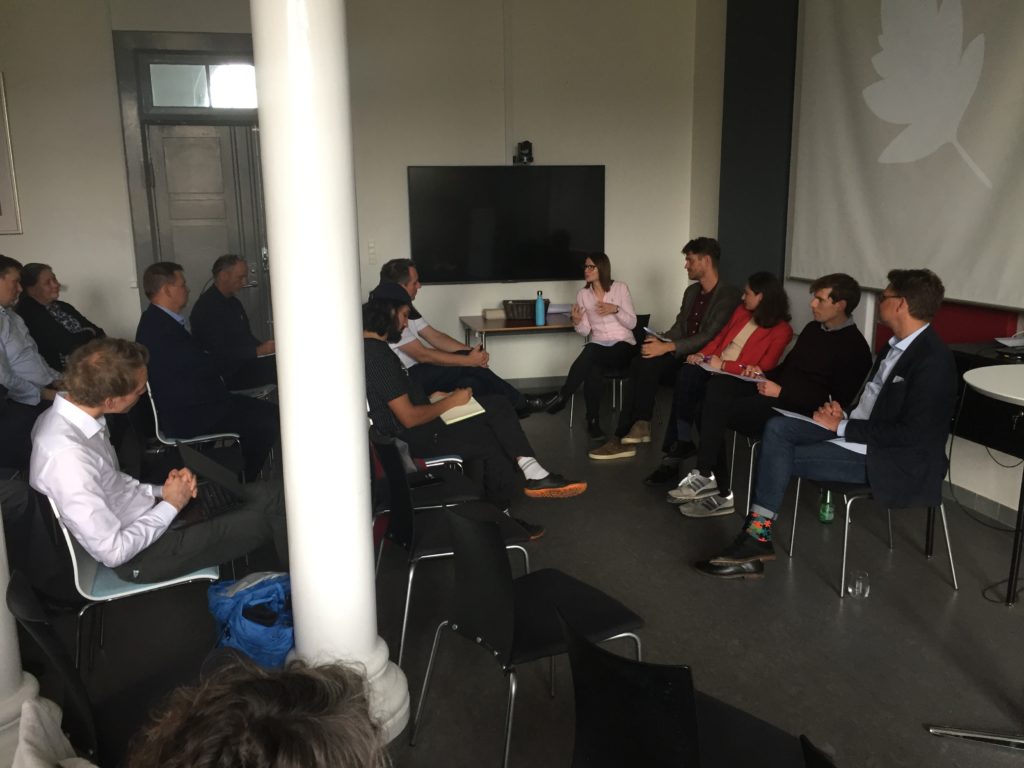By Christian Bueger
The attack on the Nord Stream attack has brought much attention to critical maritime infrastructures and their protection. Yet, we are far from a solid understanding of what critical maritime infrastructures are and what kind of protection they need. To contribute to this critical knowledge the ocean infrastructure research group of the University of Copenhagen held a public event, co-organized by the Center of Military Studies, the Copenhagen Ocean Hub, and SafeSeas – The network for maritime security.
Four speakers from the ocean infrastructure research group addressed the topic: Professor Christian Bueger, Dr. Jan Stockbruegger, Dr. Tobias Liebetrau and Professor Kimberley Peters, complemented by Veronika Slakaityte from the Danish Institute for International Studies.

Christian Bueger framed the discussion and argued that maritime infrastructures are ‘critical’ because they are fundamental for the working of societies and economies. They are deeply inscribed to a degree that most of the time they are invisible and designed to function without raising any attention. Since they reside in the background and do not receive scrutiny they are also particularly vulnerable. Yet, adding the term critical, is also an invitation to think critically about them, which is one of the objectives of the ocean infrastructure research group.
A key objective of the discussion was to explore the variety of infrastructures in the sea. Tobias Liebetrau introduced the importance of subsea data cables that transport the majority of our data and are critical for global communication and the digital economy. Based on a recently published report for the European Parliament, he indicated important practical steps that can enhance protection.
Veronika Slakaityte demonstrated how the research of her team had long alerted to the vulnerability of energy infrastructures — electricity cables and pipelines — in the Baltic Sea. She showed that this form of dependency had been mainly been discussed in economic and technical terms but hardly in security ones. In other words, the Nord Stream attacks did not come as a surprise, experts had alerted about the risks.
Jan Stockbruegger argued for the importance of not restricting the discussion to the under water domain. He argued that shipping needs to be understood as a critical maritime infrastructure as well. This brings various vulnerabilities into focus including attacks on shipping and port installations and their consequences for interrupting global trade, but also the potential harm caused on the marine environment.
Kimberley Peters likewise raised the importance of shipping, exploring in particular the problem of the invisibility of many critical maritime infrastructure. This raises challenges, not only how to bring them into public security discourse, but also how to improve their resilience.
Two key themes emerged in the discussion. Firstly, the question of what makes an infrastructure ‘critical’. One way to designate them is through technical expert evaluations in sectors. But since all infrastructures are vital to some degree, it is also a question of political choice to identify which infrastructures are ‘uncritical’ and do not need more protection.
It was also highlighted that our understanding of criticality is changing. Initially, critical infrastructure protection was a concern on the post-911 counter-terrorism agenda, with the key focus on what infrastructures might become a target of terrorist organizations. This turned our attention to airports and ports. Then the focus turned to cyber security and how infrastructures might become a target of cyber attacks with emphasis on electricity grids and company headquarters. Today’s debate concerns again physical destruction and infrastructures are now considered as a target in grey zone war fare, which makes any infrastructure a potential target.
If it comes to better protection, all participants agreed that information sharing between industry, states and international organizations is vital and that steps are required to reduce legal ambiguities and clarify governmental responsibilities.
Improving protection also requires a careful balance between civil and military measures. This concerns the costs of protection and whether it is governments or industry that should cover them. It is also an issue whether increased military protection could imply a growing risk that civilian infrastructures become military targets. Finally, it was highlighted that we should not only focus on detection and deterrence of threats, but also on responses, that is, the capacity to repair infrastructures after damage has occurred.

1 thought on “How to protect critical maritime infrastructures – event summary”
Comments are closed.